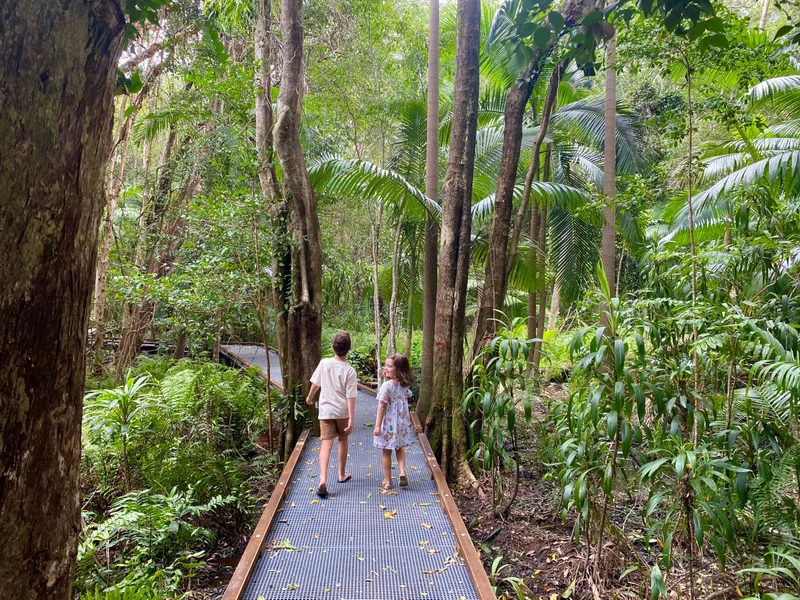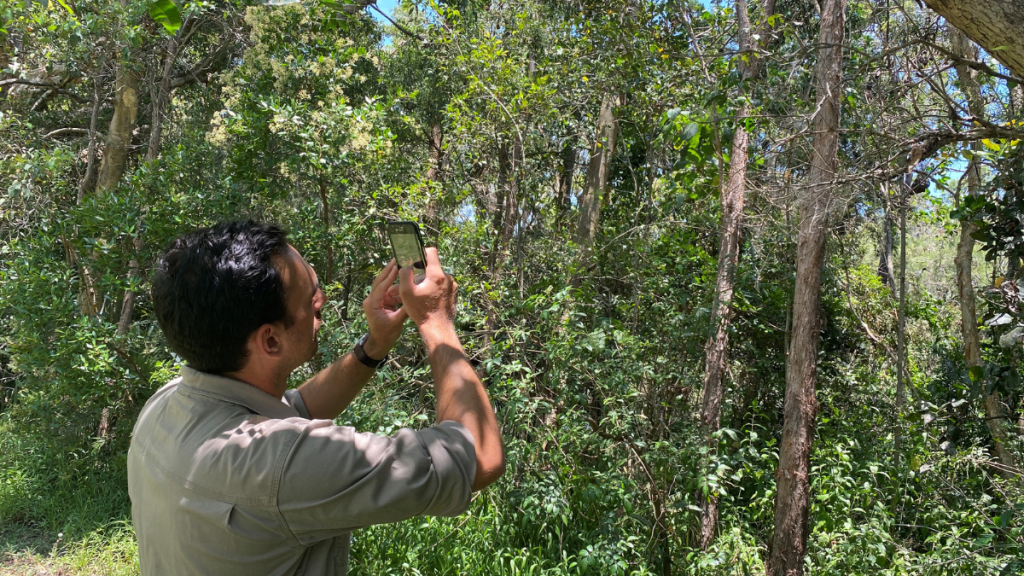Take time for nature and wellbeing in our Biosphere this Earth Hour

Earth Hour is moving beyond turning out the lights for an hour, and this year the global campaign is also encouraging people to take time out for nature on March 25.
There are so many ways to slow down and connect with nature in our Sunshine Coast Biosphere this Earth Hour, while reaping the mental and physical health benefits of spending time in the natural environment.
So, before the lights go out at 8.30pm, grab the family or a group of friends to celebrate the day together, because a community that fosters a connection with nature will act for its health and protection.
1. Go explore!
In our Biosphere we are spoilt for choice with nature reserves, beaches, waterways and trails across the region.
Visit Adventure Sunshine Coast to find a walk, canoe, bike or horseriding expedition perfect for your time allowance and fitness.
Why not take the opportunity to become a citizen scientist?
Through council’s NatureWatch program, anyone can help increase our scientific knowledge about our local environment.

ClimateWatch trails are an opportunity for residents to contribute to scientific understanding of our Biosphere.
You can provide data on our changing climate on a ClimateWatch trail or help monitor our beaches through the CoastSnap program.
2. Be a hero for nature
Anyone can be a steward of nature, and every little action helps.
On March 25, two BushCare groups will be holding their regular working bees to remove environmental weeds and planting natives to conserve habitat for our local wildlife.
Email [email protected] to join either of these working bees:
- Shelly Beach Conservation Group working bee: 8am-10am at the Shelly Beach Foreshore Reserve
- Friends of Cahills Scrub working bee: 9am-12pm at the Cahills Scrub Bushland Reserve
There are plenty more opportunities to join BushCare working bees across the region, all year round. To find out more about the BushCare groups in your area, visit council’s website.
A litter-collection adventure is another opportunity for the kids to learn environmental responsibility and embrace environmental pride, all while exploring the parks, conservation areas, beaches and waterways the Sunshine Coast has to offer.
Litter can break down into harmful microplastics and also poses a danger to wildlife: as a single example, our sea turtles can mistake plastic for food, so every piece removed is a potential life saved.
3. Bring more nature into your space
Do you have a place in your yard or even on a balcony to house local native plant species?
Community native nurseries across the region offer local natives for budget prices, while also supporting local conservation efforts, and you can ask volunteers to guide you through the perfect plants for your situation.
Then find out how to make your garden a haven for wildlife, and get ready to welcome more birds, butterflies, bees and frogs into your life.

Creating a frog-friendly pond is a simple way to welcome more wildlife into your yard.
Don’t forget to educate yourself on local weeds on council’s website, or even report a priority invasive weed.
4. Get the low-down on our local fauna
Our Biosphere is home to an array of wildlife. Here are a few ways to learn more about our local animal species:
- The TurtleCare program monitors and supports our region’s turtles with the help of dedicated community volunteers, and also provides resources for residents on living with sea turtles
- Migratory shorebirds are the world’s most threatened group of birds, so visit council’s website to help make sure they have the best chance of survival while travelling 20,000 to 30,000 each year
- Batpod is an interactive educational podcast for ages 10-15, where you get to call the shots and learn about the challenges and solutions for communities living alongside bats
- Learn what to do if you find sick or injured wildlife on council’s website
- Visit council's Environmental Visitor Centres at Maroochy Regional Bushland Botanic Garden, Maroochy Wetlands Sanctuary or Mary Cairncross Scenic Reserve.
Find out more about council projects and programs:
Last edited on:
First published on: